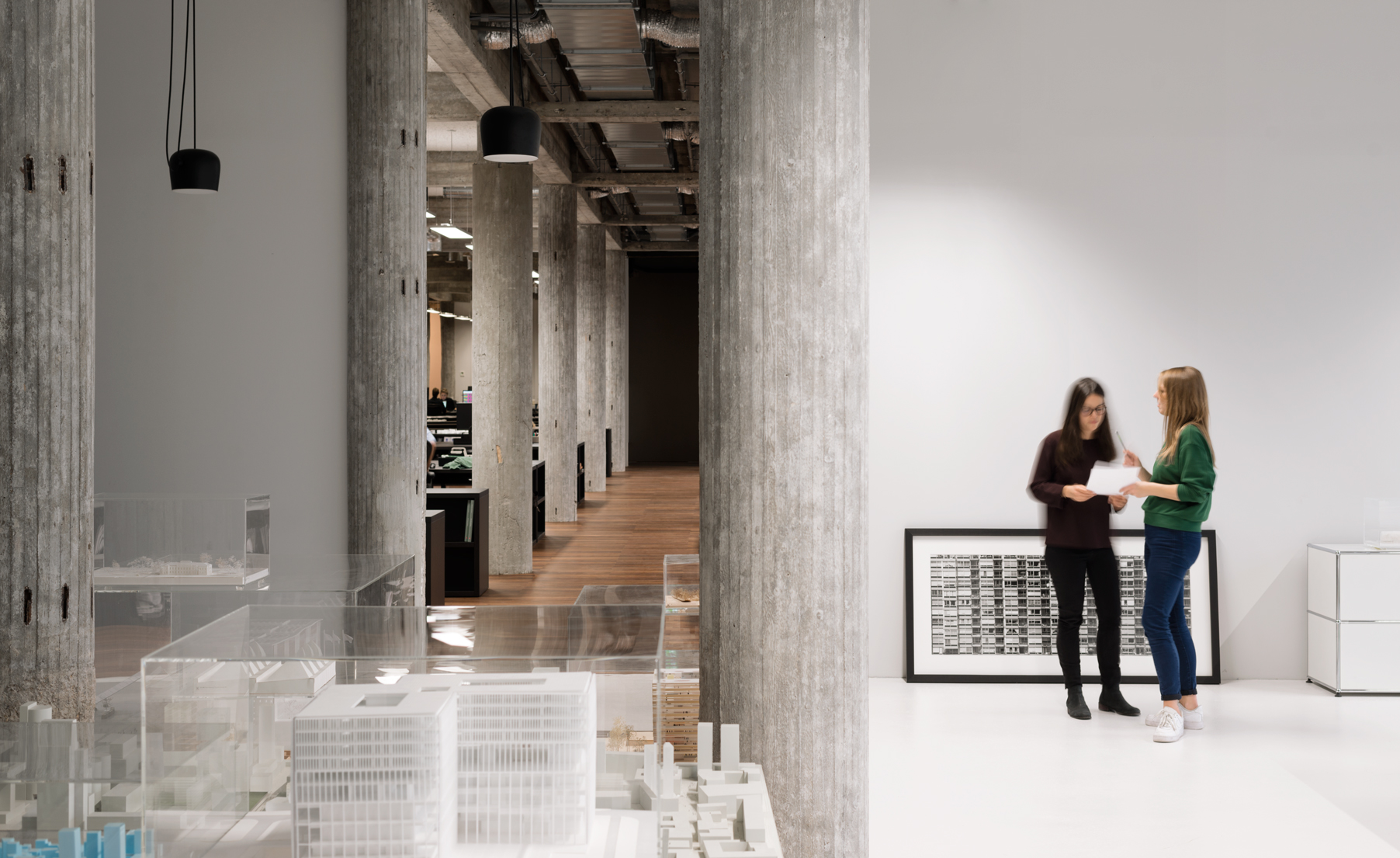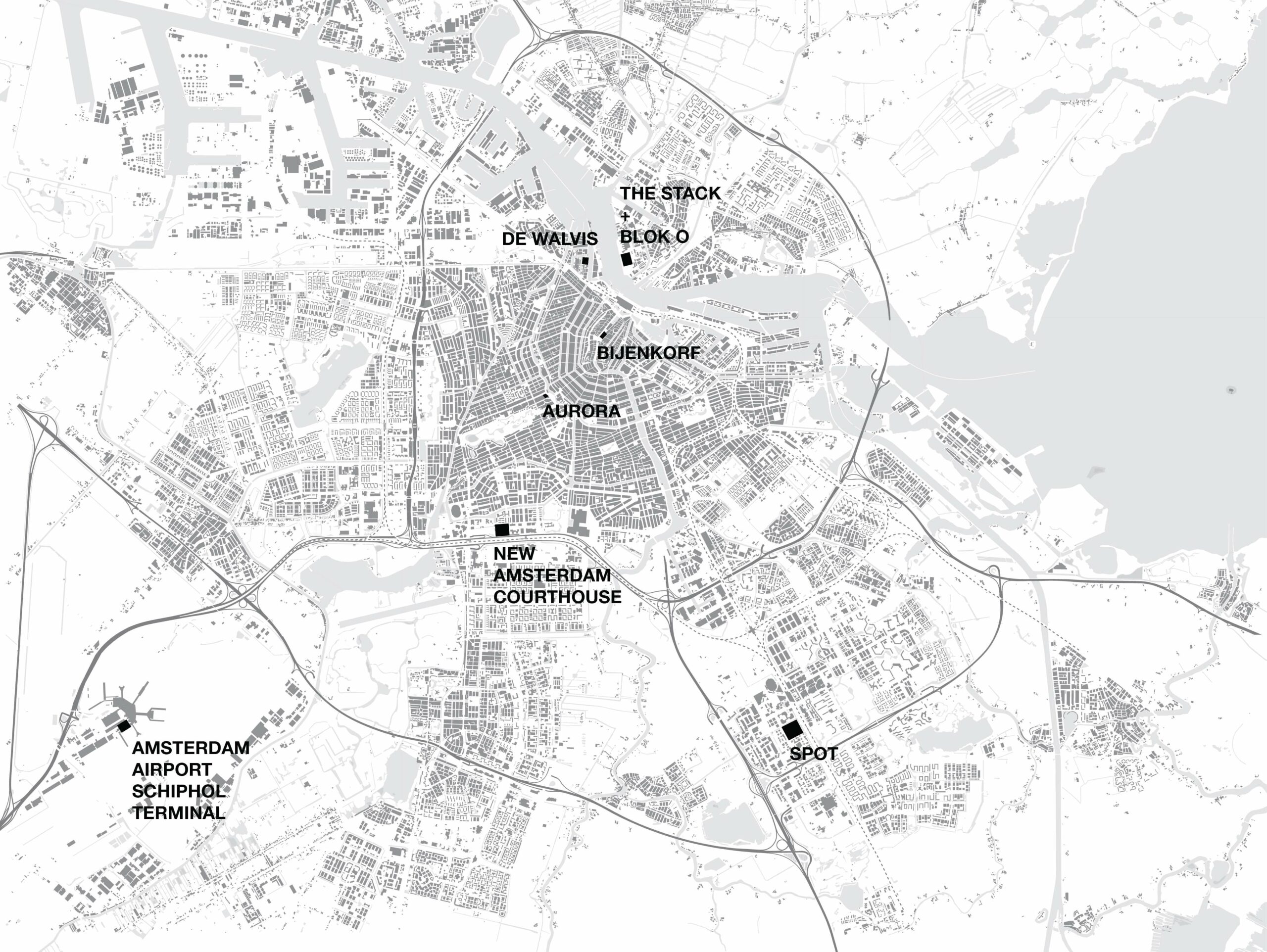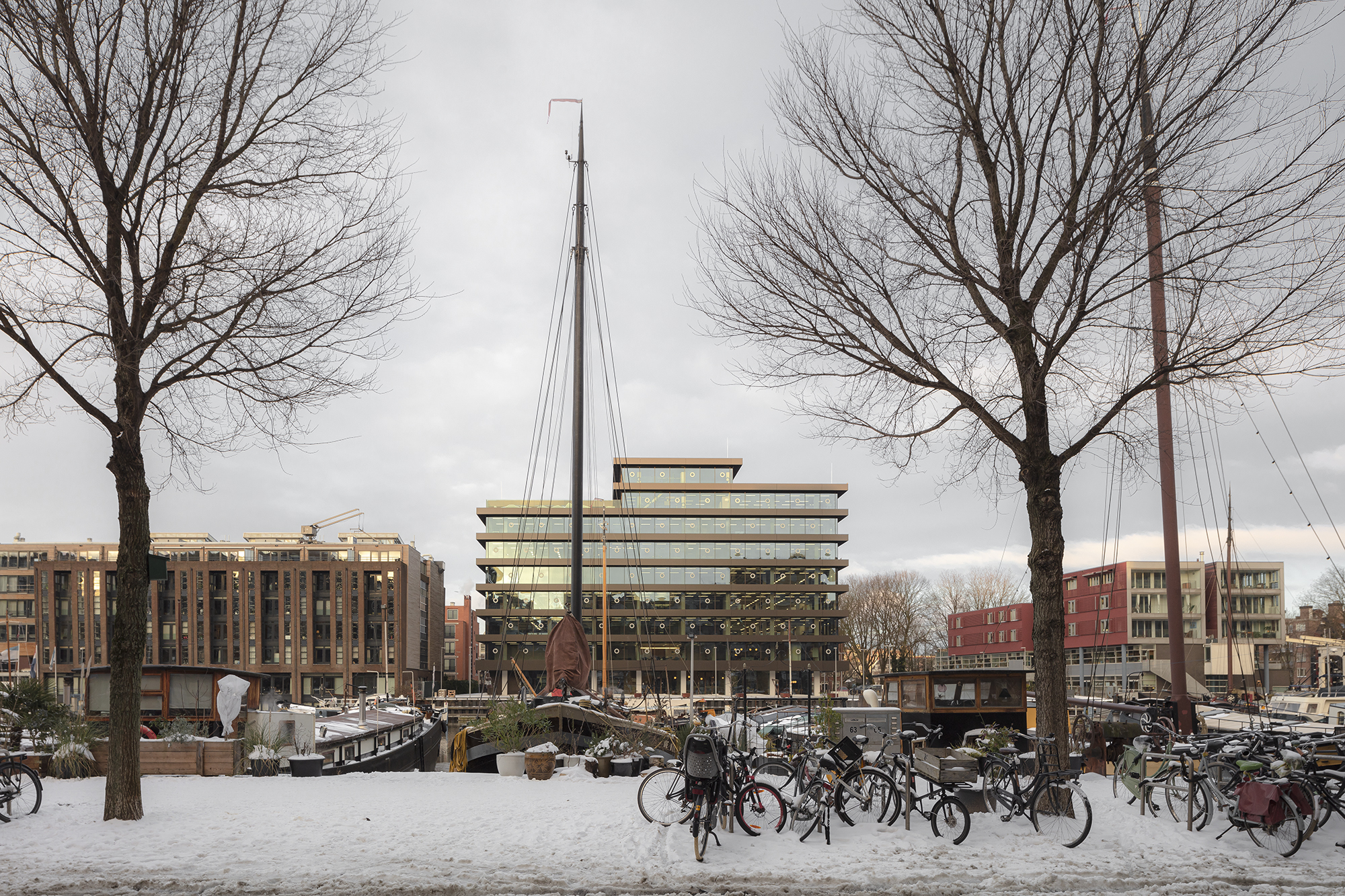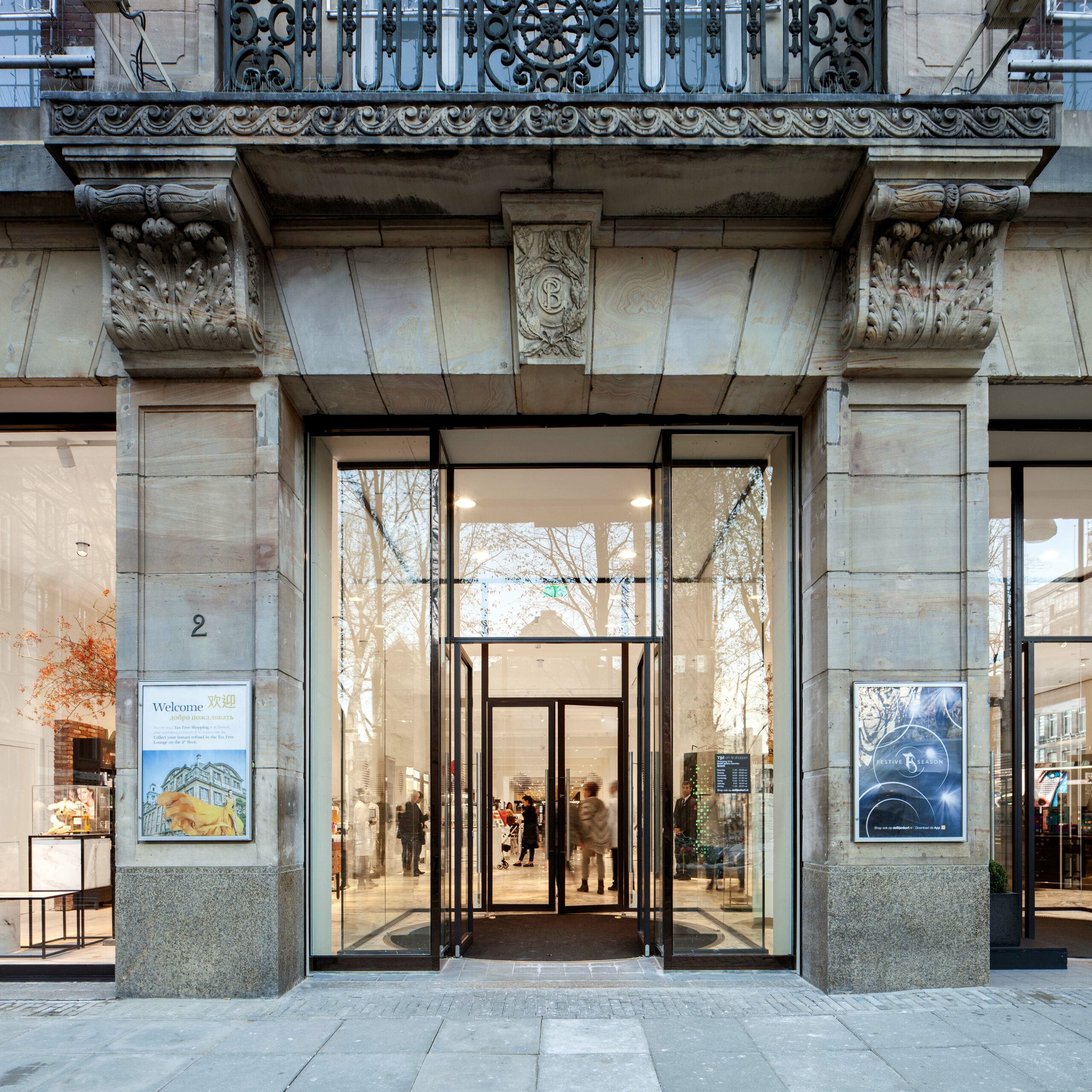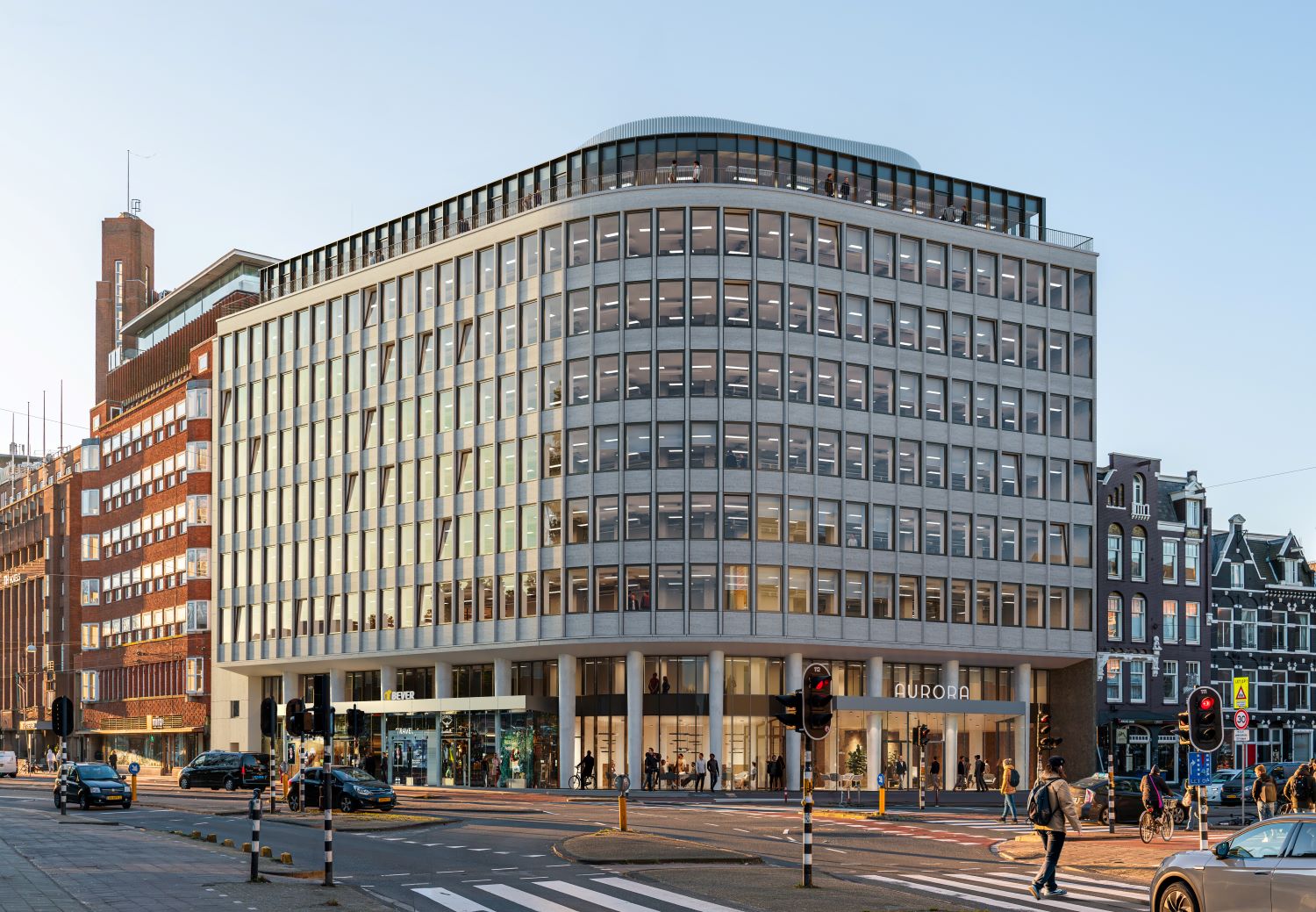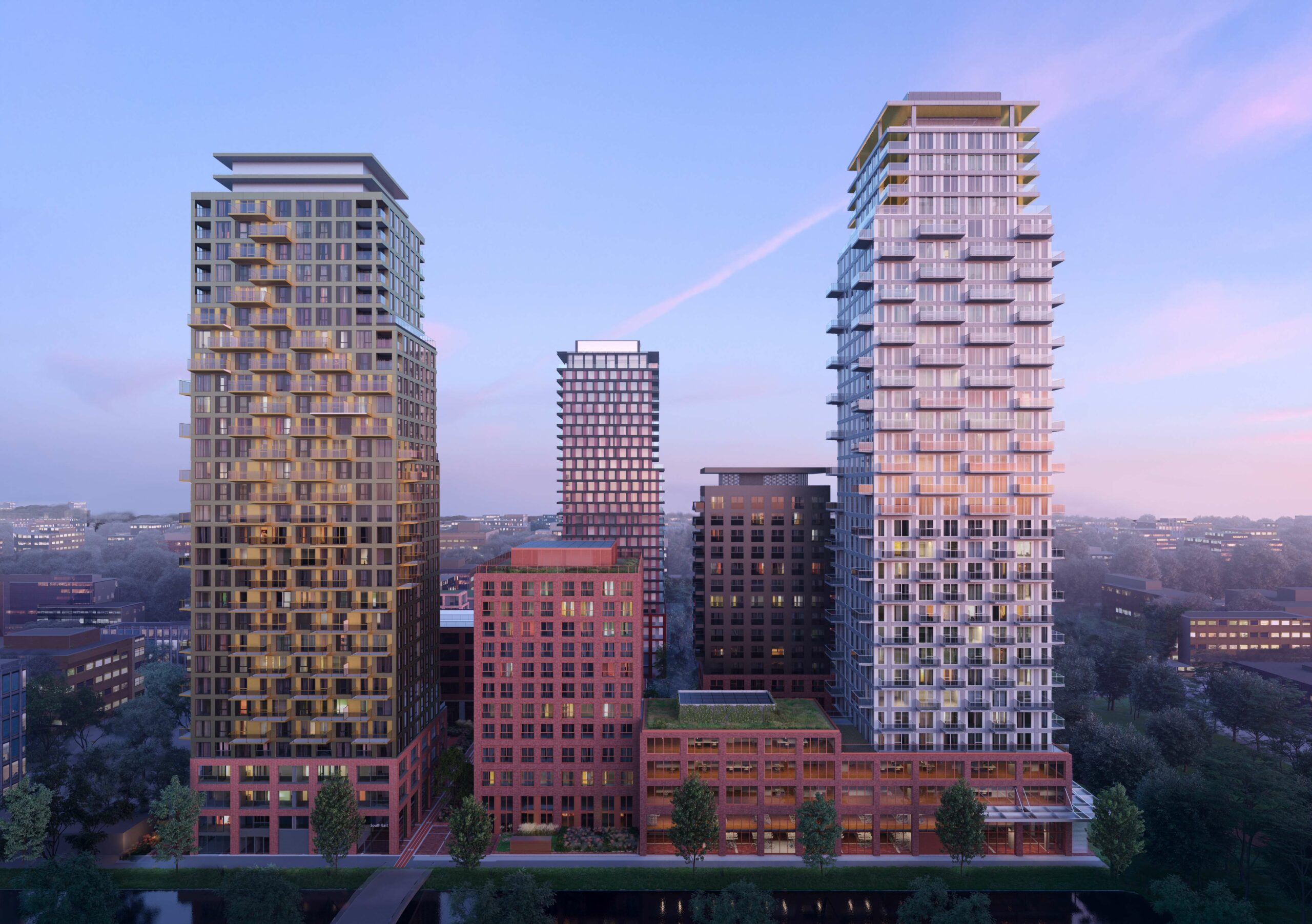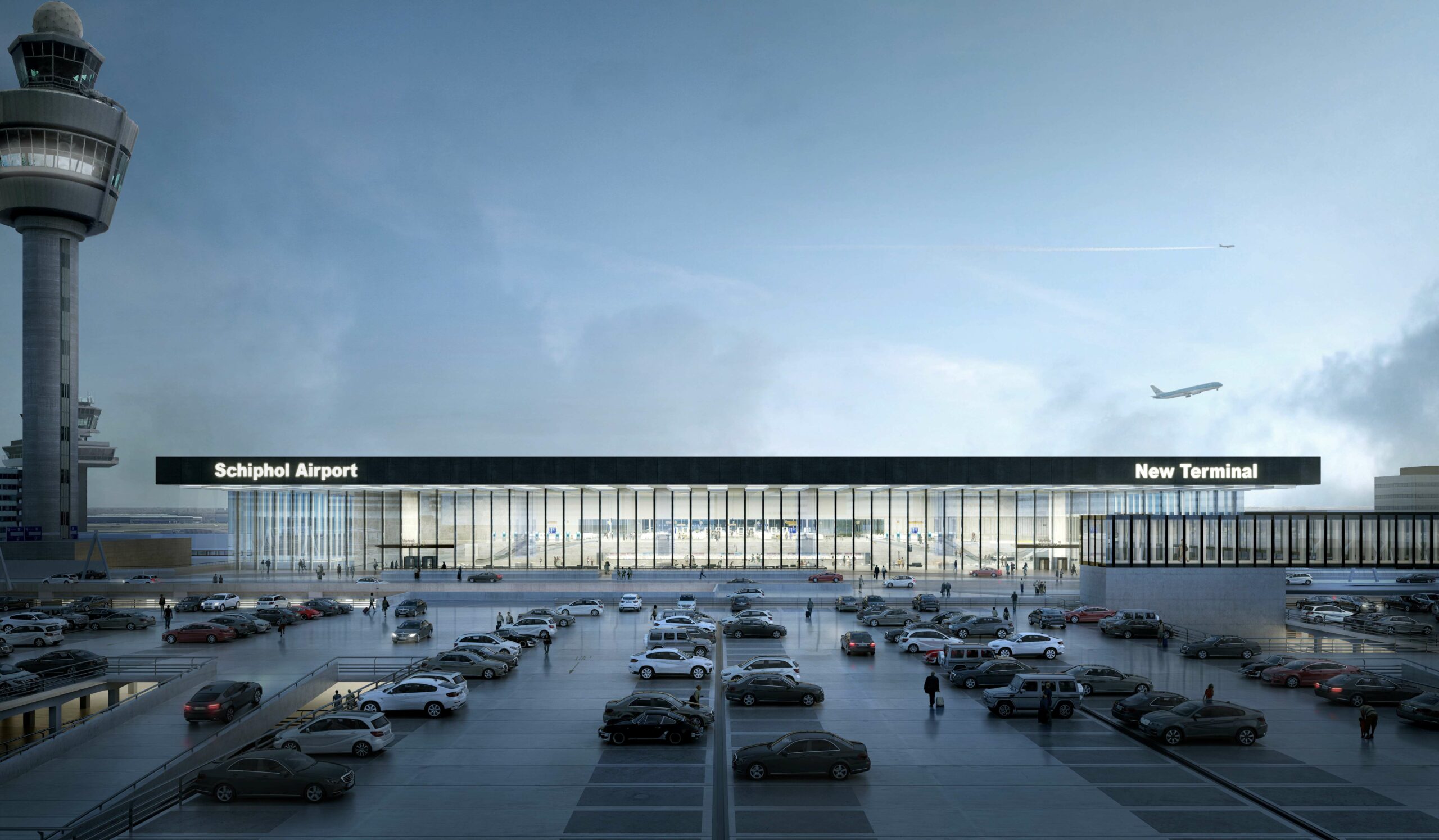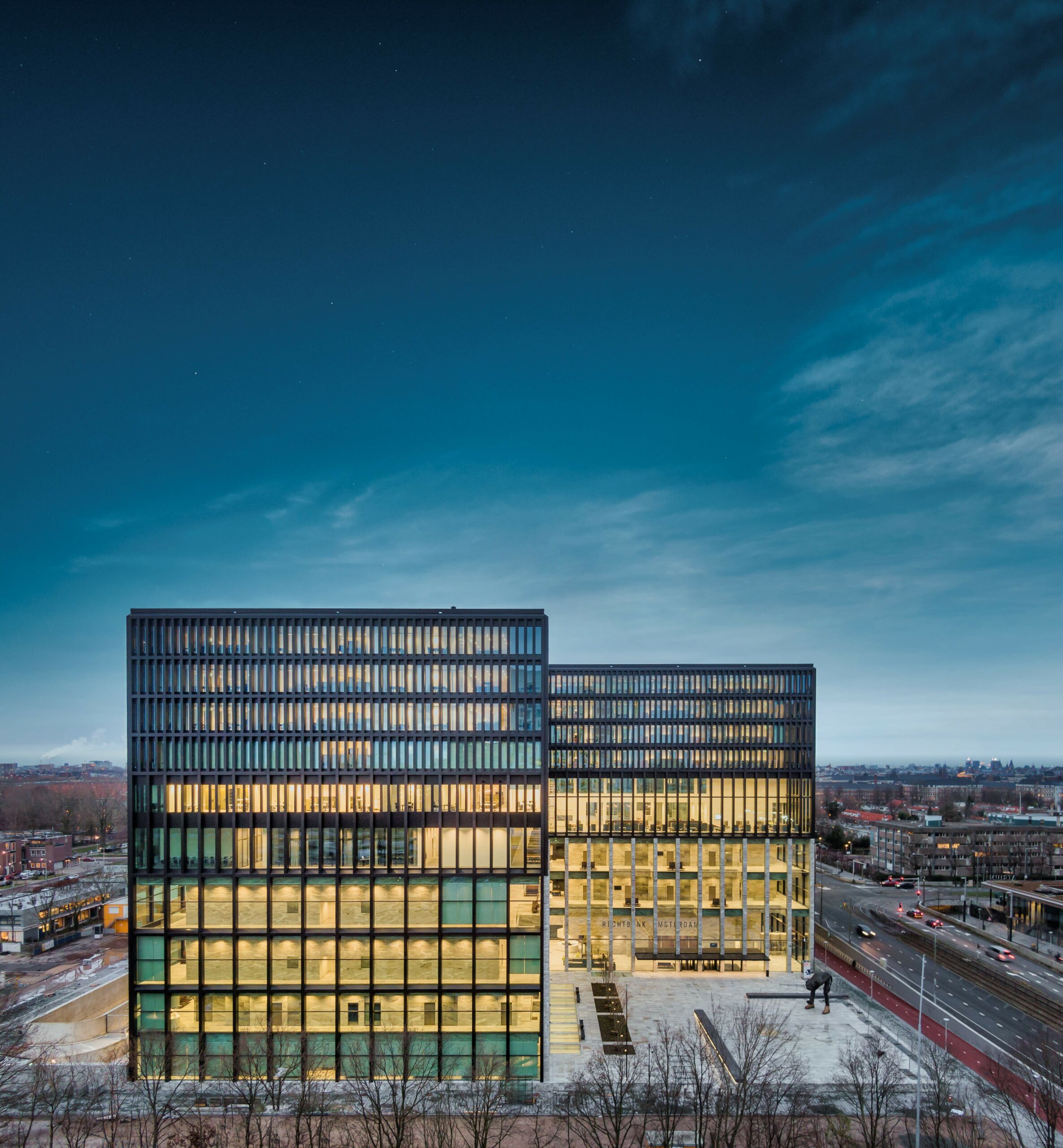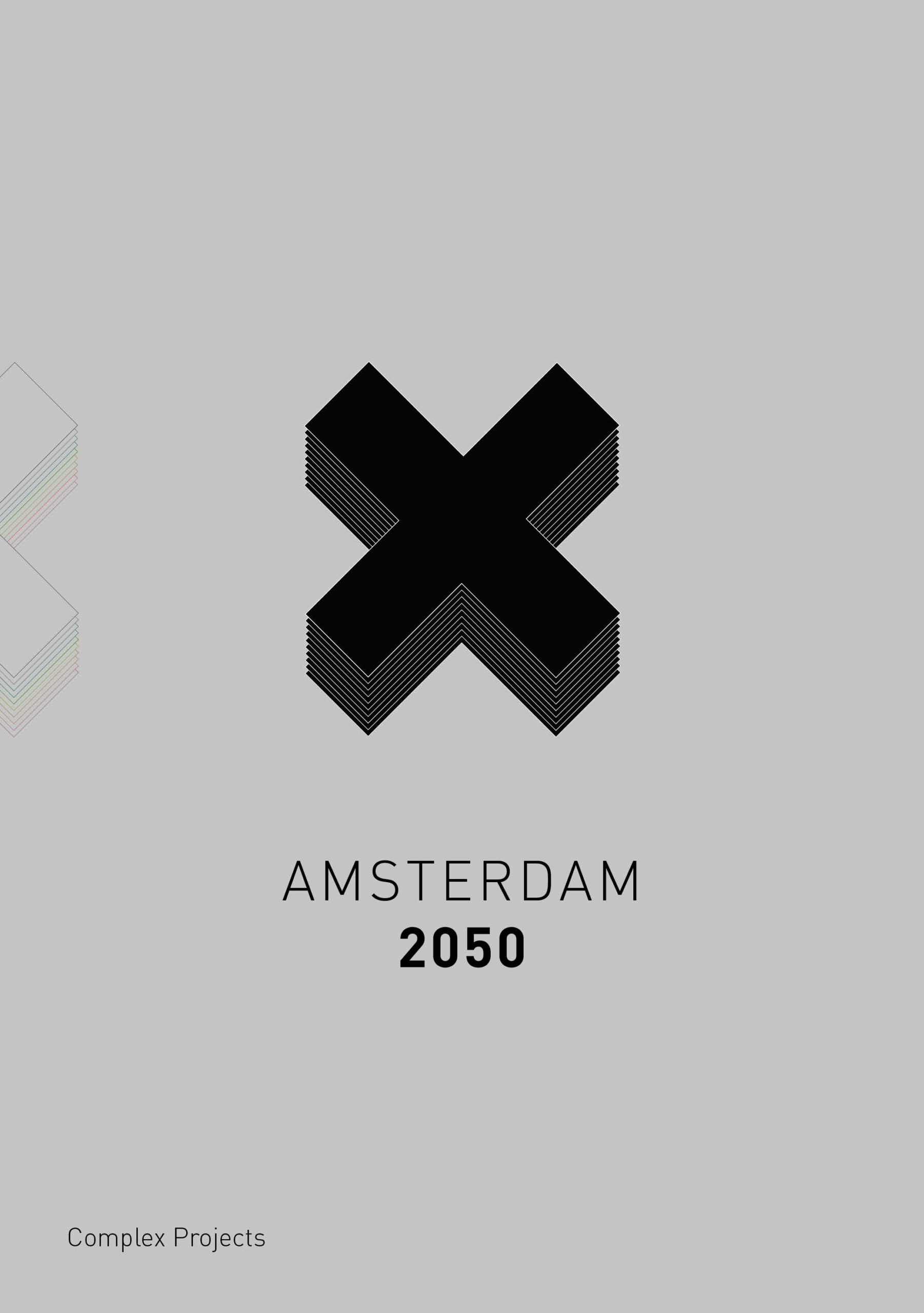The work of Arcam is supported by subsidy providers, sponsors, funds, partners, and individuals. Sponsors and Arcam share a special relationship, not only one of support, but also of substance. Through a series of interviews, we introduce you to new or longstanding sponsors, as well as those who have renewed their support.
Who is KAAN architecten?
KAAN Architecten is a Dutch architectural firm based in Rotterdam, São Paulo, and Paris, with over 30 years of experience in a wide range of scales and typologies. Starting in 1987 as Claus en Kaan Architecten, it later developed into KAAN Architecten in 2014, continuously on the pursuit for architecture which is context-specific and timeless.
The firm is led by Kees Kaan, Vincent Panhuysen and Dikkie Scipio. Since its establishment, KAAN Architecten has engaged in a diverse array of projects within both the public and private sectors.
KAAN Architecten has over 30 years of experience in a wide range of scales and typologies.
From interiors to urban planning, retail spaces to museums, educational buildings to highly complex research facilities; KAAN Architecten approaches each project with honesty and sobriety in both concept and materialisation, resulting in the powerfully simple.
Why did KAAN became a sponsor of Arcam?
Arcam is a great institution for open discussion and planning for the city of Amsterdam. This considerable hub of ideas and initiatives is an ideal stage for knowledge exchange and research development for a new and better city.
The recent debate on how to achieve the right density in different parts of the city is an example of this attitude. KAAN Architecten’s many projects in the city have given us a extensive awareness of the big picture and the main questions for Amsterdam, and we are eager to share and debate.
Which Amsterdam project would you like to introduce to the Arcam audiences?
Recently in the early 90’s, the founding partners of KAAN Architecten were actively engaged with the last urban renewal projects within the city centre. These include Kadijken and Haarlemmerstraat, the project of Borneo Sporenburg on the eastern islands, the revitalisation of the Bijlmermeer, and the initial studies for IJburg.
Contemporary Amsterdam projects
A more actual example can be found in Overhoeks, which is located north of the city centre, along the river IJ. It is currently under development by Amvest with both owner-occupied and private sector rental apartments. In this context of the coherent masterplan by Geurst & Schulze from 2003, KAAN Architecten is designing two different residential projects named The Stack and Blok O.
For The Stack, the challenge was to translate and express the oxymoron of individuality and collectivity which are both seen as specific qualities in this kind of urban living. With this project KAAN Architecten experimented with the idea of maximum variety of floorplans including 120 unique apartments; Two big villa’s connected by shared deck and garden merge these individual units into one project. In Blok O another approach was chosen; That of elegance by refined building contours and elongated balcony slabs. This, increases spaciousness and views while giving a feeling of privacy and seclusion within a relaxed, green, and healthy living environment.
De Walvis
More to the west and across the IJ, another old ship- and dockyard area is transforming. As the port activity was slowly abandoned, the area developed into a mix of residential and commercial properties, and the site was put under heritage protection by UNESCO. Built in the early 60’s, De Walvis (Dutch for ‘the whale’) is now the only remaining office building on Bickerseiland, and although modern at its conception, the building no longer complied with contemporary workplace standards. KAAN Architecten was commissioned by the Maarsen Groep for a complete strip-down and renovation of the building. The emphasis was put on sustainable re-use and bringing in ergonomic qualities such as more daylight, increasing the interior heights, and upgrading all installations to the highest standards – leading to the BREEAM Excellent certification.
De Bijenkorf
Located at the very heart of the city, between Dam Square, Damrak and Beursplein, one can find De Bijenkorf, the Amsterdam flagship store designed in 1914 by J.A. van Straaten. KAAN Architecten’s restoration of the building brought about two desirable outcomes: it reinforced its strong identity, and also supports a future-proof framework for further development.
Aurora
On the corner of the Stadhouderskade and the Overtoom the iconic Aurora is heading towards a sustainable future. KAAN Architecten is designing the striking corner building commissioned by BEING, transforming it into a state-of-the-art office location with international allure.
It was designed by the renowned Dutch architect Piet Zanstra for the Aurora life insurance company in the 1960s. The renovation of Aurora combines character preservation with innovation. The ambition is to modernise and make the building more sustainable while respecting its history and unique features.
SPOT
One of the larger urban transformations in Amsterdam is taking place in the south-east part of the city. In this area, the SPOT project originates from the question on how to redevelop the Hogehilweg area, characterized by a series of typical low density and monofunctional mirror glas office blocks from the 1980-90s surrounded by a sprawl of parking lots. This neighbourhood will be transformed into a cosmopolitan mixed-use part of the city over the next few years. KAAN Architecten, commissioned by COD and DUQER has designed the masterplan for the area that establishes different atmospheres simultaneously, creating both an intimate inner-city environment and an expanding metropolis, the village and the city in one.
Particular about this project is that it was not initiated by the city with a development vision as an integral approach but rather by their private clients that came into possession of some plots in the area. The strategy of the design was that those plots would be developed independent of a larger scale approach but that the plan could trigger such a larger scale development. During the planning phase the municipality joined forces and envisioned the central Hondsrugpark and redesigned the mobility plan for the area.
New Terminal at Amsterdam Airport Schiphol
As part of Schiphol’s 10-year midterm plan of 2017, KAAN Architecten takes the design lead in a collaboration with Estudio Lamela, ABT and Ineco (working collectively as KL AIR consortium) to plan, design and engineer the New Terminal at Amsterdam Airport Schiphol.
The spatial organization of the terminal, its functional and architectural design, are boosting the existing facilities to update Schiphol and maintain its role as the leading European aviation hub.
Due to the pandemic crisis the project was put on hold but has recently been rebooted with a shift in ambitions. It is now geared towards phased development, sustainability, and passenger experience.
New Amsterdam Courthouse
KAAN Architecten contributes to the flourishing of the Zuidas district with the New Amsterdam Courthouse, right at the intersection of the Zuidas and Parnassusweg, where it replaces the previous judicial complex. As the largest courthouse in the country, the building is exemplary in its efficiency and organization, and remarkably integrated into the daily life surrounding it since its completion in 2020.
AMSTERDAM 2050
A city amid globalization is not only a challenge but can also be a breeding ground for knowledge. Initiated by Kees Kaan at the Faculty of Architecture at the Delft University of Technology, the Chair of Complex Projects states that it ‘investigates settlements around the world that are ambiguous in their development and embedded in the process of globalization.’ Students are encouraged to look critically at their surroundings; to gather, organize, and question the complex forces that ultimately manifest themselves into our built environment.
In a period where Amsterdam was recovering from a development crisis, a result of the financial crisis of 2008, the city was frantically searching for new areas to develop after a period of almost full standstill. Therefore, from 2020 until 2021, Complex Projects teamed up with AMS Institute – where Kees Kaan serves as a Principal Investigator – and the municipality of Amsterdam, and focused on the theme AMSTERDAM 2050. A research-through-design process was developed, as part of which the present urban conditions of the City of Amsterdam were documented and analysed. Through this the various trends which would direct future urban development were investigated, and ultimately resulted in design solutions and visualizations for the predicted development of these locations.
By using Amsterdam as a living laboratory, graduate students, researchers, and teachers have been exploring how these changes might affect the city, to provide input for the decision making of the redevelopment plans 2025-2050. If you want to know more about AMS 2050 research, please check out the dedicated publication.
KAAN Architecten continues to actively contribute to the definition and construction of the new image of the city. They have recently engaged in a diverse series of projects which range from residential buildings to master plans, public institutions, and even international transport hubs. All are located in current hotspots for expansion, and as a result have given KAAN Architecten a deep understanding of the city’s development. The firm’s mission for contemporary Amsterdam is to improve the environment by striving for the highest possible quality within each individual project. Developed around the context of today, the projects respond to the current situation, but keep a keen eye towards the future. Sustainable, of the highest quality of comfort, and easily comprehensible – each building is a contribution towards the city’s enhanced future.
